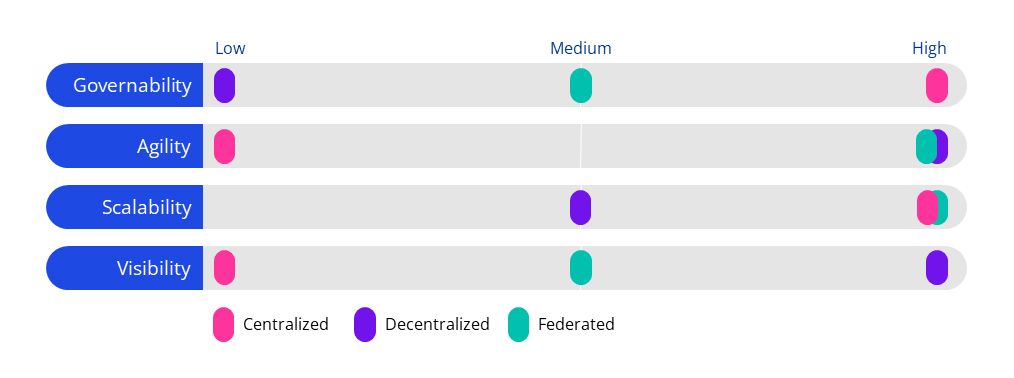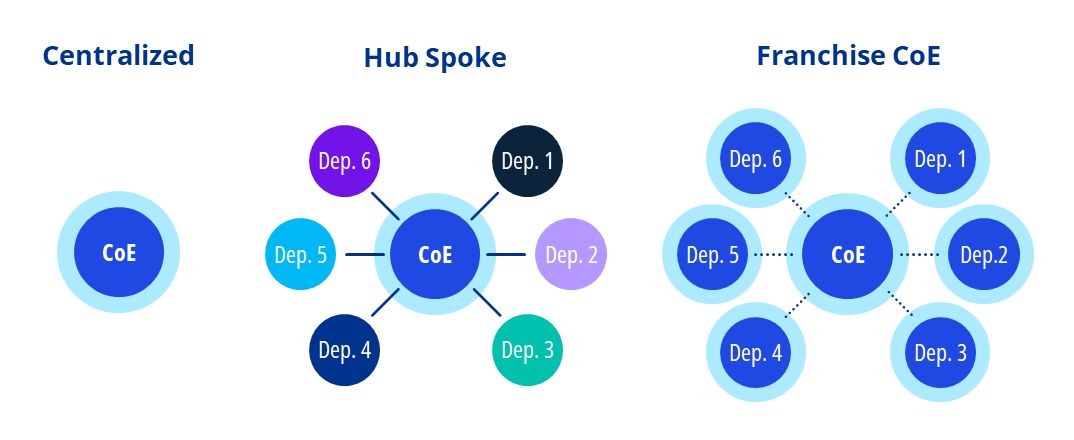Follow us into the future where hyperautomation is not just a buzzword anymore, but the driving force behind operational efficiency within any organization. Hyperautomation, leveraging the synergy of advanced technologies such as Artificial Intelligence (AI), Machine Learning (ML), and Robotic Process Automation (RPA), holds the potential to automate processes end-to-end, going beyond the constraints of individual tasks. By integrating these tools effectively, organizations can automate their back-office operations and drive significant process improvements and operational efficiency while simultaneously adapting to emerging business requirements, enhance customer satisfaction and loyalty, and elevate their competitive position in the dynamic business landscape of today. Transitioning towards hyperautomation, however, involves considerable challenges.
A successful implementation requires strategic planning, an understanding of the entire customer journey, and alignment of the existing IT infrastructure. These are not just hurdles but critical elements needing precision, coordination, and robust governance to unlock hyperautomation's full potential. An effective Center of Excellence is the key enabler for structured and robust governance. More than just a steering committee, the CoE facilitates and accelerates the practical application of hyperautomation. It is a dedicated team that identifies automation prospects, oversees project design and implementation, ensures adherence to best practices, and aims for alignment with broader organizational goals, all the while fostering operational excellence.
At KPMG, we believe that setting up an automation CoE is critical to enabling successful automation initiatives. A CoE helps organizations in optimizing their automation initiatives, identifying and prioritizing opportunities for automation, selecting the right tools and platforms, developing effective governance structures, and providing necessary trainings to members of the team. In addition, a CoE is also an excellent vehicle to coordinate change initiatives throughout an organization. It stimulates change by effectively embedding automation efforts within the organizational structure, promoting the exchange of best practices, enhancing control mechanisms, and accelerating speed and return on investment. CoEs come in various forms, such as centralized, decentralized, or even federated models, each with distinct roles and responsibilities. Irrespective of the selected type, it is essential to harmonize with the specific requirements of the organization, with factors such as structure and size influencing what the most appropriate form is. Read on and uncover the intriguing distinctions among various CoE types, while gaining insights in how automation strategies can be optimized.

Figure 1: Key distinctions among the various types of Centers of Excellence
Figure 1 illustrates the key distinctions among the various types of Center of Excellence (CoE) models, applied on four dimensions: governability, agility, scalability, and visibility.
Governability indicates the degree of control management wields over the CoE, particularly in aspects such as process prioritization. Agility is focused on the capacity of developers to generate solutions tailored to specific business units under structured governance. Scalability enters as a determinant on whether a particular type of CoE is well-suited to expand and evolve across different business units or departments. Finally, visibility refers to the awareness and accessibility of the CoE among its end users, as this helps to promote its benefits and potential.
Centralized CoE
The centralized Center of Excellence (CoE) functions within a traditional model, with a core team responsible for conceptualizing and executing best practices throughout the organization. This model is best suited for entities with centralized decision-making structures.
Decentralized CoE
In a decentralized Center of Excellence (CoE), separate entities within the organization are closely aligned with specific business units or departments, each with its own internal process structures tailored to the goals of the individual business units or departments.
Federated CoE
A federated Center of Excellence (CoE) model offers an evolved organizational framework for envisioning, initiating, and controlling business process solutions. This structure efficiently allocates roles and duties across a series of business units, each interconnected by common business objectives. At the same time, it upholds a Center of Excellence structure that is uniquely sculpted to fit the requirements of the enterprise, balancing the overarching business goals with unit-specific strategies.
Case study: successful growth in robotics and automation at a government institution
This case study focuses on a government institution's journey through multiple phases of implementing a Center of Excellence (CoE) for robotics and automation. It explores the various governance structures applied along the way and the factors contributing to a successful CoE implementation. Furthermore, it illustrates how different types of CoEs provide the best organizational fit under the circumstances at hand.
Growth phase: proof of concept
The institution initiated a proof of concept within its Shared Service Organization, focusing on technological awareness and employee education. Recognizing the potential of robotics and intelligent automation to reduce manual labor-intensive tasks and support organizational goals, management aimed to deal with labor shortages and administrative burdens by simplifying business processes.
Growth phase: pilot project
Starting off with small scale experiments, they successfully spread new methods across various departments. The central team, or CoE, took the lead in acquiring learning experiences from the pilot projects and was responsible for making adjustments, and improving the way of working. This gained a lot of interest from people across different teams within the organization.
In the early days of the CoE, these pilot projects were key to developing the most suitable way of working within the organization. The developers stuck to these methods, ensuring activities were done in a structured manner and effectively, striving for the best results. However, this could sometimes limit how creative they could be.
Practically speaking, having a central CoE means that everything is overseen centrally and the solutions are tailor-made to each part of the company, following a structured approach. This helps getting everyone on the same page and promotes transparency across all departments. The strength of this model lies in setting up streamlined processes, contributing in a unified way to the organization-wide objectives, boosting efficiency and nudging everyone towards the same goals.
However, having all decisions made centrally could slow down new and agile methods, as it lacks specific input from other parts of the business. It could also limit automation efforts towards specific goals within the business unit, at the cost of individual business unit’s performance. Despite these challenges, it does bring efficiency and centrally governed methods, making it a great fit for the primary – often large-scale – businesses processes.
Once the organization had a solid base of standard ways for doing things, clusters within the company started to form. At this point, a more decentralized method was just what the organization needed.
Growth phase: decentralized implementation
Looking for ways to apply their solutions to other departments of the organization, the central CoE team, started using a hub-and-spoke – decentralized – model (figure 2). This allowed them to connect with more business units. Each unit had its own small CoE, all managed within the companies’ central governance structure.
This model allows for flexibility and agility in ways to solve problems across the different departments, making the company more capable of creating tailored solutions for specific business needs. A decentralized approach works best in midsized to large companies where each department has its own unique set of challenges and responsibilities, where rapid knowledge sharing is embedded and where fast decision-making is more rule than exception.
On the flip side, the less-central approach can lack uniformity across the whole company, which can potentially lead to doing the same thing twice and make it hard to roll out the best practices company-wide. Also, sharing costs and expertise is perceived as more challenging, limiting the benefits of implementing one solution across all areas of the business. Despite these hurdles, a less central setup provides an optimal fit when the different departments of the business have ownership of the way they organize their work, without the need to stick to central-oriented regulations and where specific goals and key performance indicators drive decisions independently of the wider business.

Figure 2: Comparison of various governance structures for a Center of Excellence
Growth phase: integration and collaboration
The successful implementation and expansion of robotic process automation and intelligent automation can be largely attributed to the progressive evolution and strategic support provided by the CoE during the various stages of development. Originally, there was a centralized CoE acting as the cornerstone of automation expertise. This CoE served as the foundation, enabling the institution to understand and harness the power of automation. Gradually, as knowledge and confidence grew, the organization began to branch out, establishing autonomous hubs across different divisions. Taking advantage of the valuable lessons and experience derived from the central CoE, each hub started operating independently.
As time passed, the process of creating these independent hubs became more efficient and successful by leveraging previous learnings from the centralized CoE. Consequently, it rapidly expanded to nearly every department within the organization, that are now operating their own hubs. Despite their autonomy, these hubs still maintain a strong connection with each other, continuously drawing knowledge and sharing insights, embodying the essence of an interconnected and dynamic CoE.
In conclusion, a Center of Excellence's (CoE) ability to adapt is crucial to an organization's growth and automation advancements. The journey from a centralized CoE to a decentralized, hub-and-spoke model clearly demonstrates the institutions’ adaptability's transformative power. Ultimately, it shows the CoE's potential as a dynamic powerhouse driving growth and operational excellence. KPMG enabled this gradual transformation, leveraging our broad industry experience and best practices, by incorporating different stakeholders and organizational objectives during each phase. The success of the CoE can be attributed to the critical factors below, facilitated by KPMG.
Key success factors
- Leadership and vision: Recognizing that the strategic value of robotics and automation provided a strong foundation.
- Culture of innovation: A supportive innovation culture enabled creative solution development.
- Knowledge sharing and training: Continuous knowledge sharing, staff training, and centrally directed frameworks facilitated close alignment with organizational challenges.
This case study underscored the importance of tailoring CoE structures to strategic goals, organizational needs and specific growth phases. Additionally, it highlighted the dynamic nature of CoEs, emphasizing the need for regular adaptations to align with technological advancements and organizational shifts.
Ready to start your hyperautomation journey?
To maximize the benefits of automation, it's crucial to understand your organization’s unique needs and pinpoint areas for improvement. This is precisely what KPMG's Hyperautomation Scan offers. This tool evaluates key accelerators integral to your automation journey, mapping your organization's current performance and maturity levels in areas such as automation strategy, governance, and degree of automation. Not only does the Hyperautomation Scan assess the current state, but it also delivers insights tailored specifically to your organization. These insights can help in mapping a practical course of action for enhancing your automation strategy further. They guide you towards achieving the targeted return on investment, improving customer satisfaction, and attaining levels of operational efficiency. Hence, the Scan assists you in initiating actionable steps towards an optimized, high-performing operational future.



